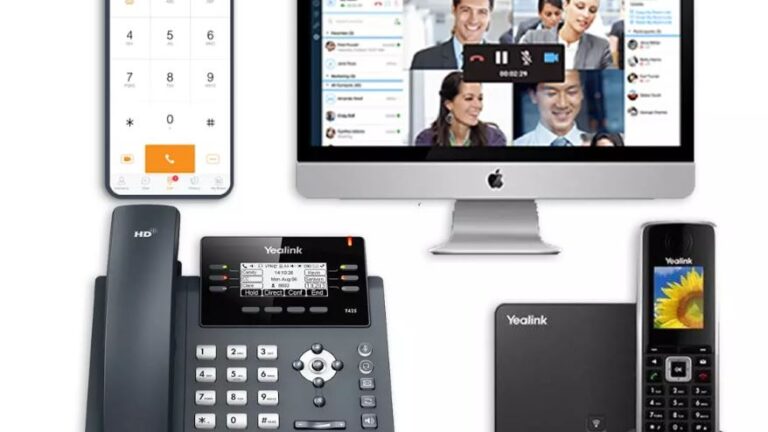Voice over Internet Protocol (VoIP) technology has revolutionized the way we communicate, offering cost-effective and flexible solutions for home users. For UK residents, understanding how to configure VoIP can enhance your communication experience while reducing costs. This comprehensive guide will walk you through the essential steps to configure VoIP for your home, ensuring you get the most out of this innovative technology.
Understanding VoIP: The Basics
VoIP converts your voice into digital signals, allowing you to make calls over the internet rather than through traditional phone lines. This method offers numerous advantages, including lower costs, increased functionality, and greater flexibility. However, to fully benefit from VoIP, proper configuration is crucial.
Choosing the Right VoIP Service Provider
Selecting a reliable VoIP home phone UK service provider is the first step. In the UK, popular providers include BT, Vonage, and RingCentral. When choosing a provider, consider the following factors:
-
Cost: Compare pricing plans and ensure there are no hidden fees.
-
Features: Look for features like voicemail, call forwarding, and video conferencing.
-
Customer Support: Reliable customer service is essential for resolving any issues.
-
Compatibility: Ensure the service is compatible with your existing hardware and internet connection.
Setting Up Your VoIP Hardware
To get started with VoIP, you’ll need the appropriate hardware. Here’s a list of essential equipment:
-
VoIP Adapter (ATA): If you want to use your traditional phone with VoIP, an ATA is necessary. It connects your phone to the internet.
-
IP Phone: An IP phone is designed specifically for VoIP and offers better call quality and additional features.
-
Router: A robust router ensures a stable internet connection, which is crucial for VoIP performance.
-
Headset: For the best audio experience, consider using a high-quality headset.
Configuring Your Router
A stable and fast internet connection is the backbone of a successful VoIP setup. Follow these steps to configure your router for optimal VoIP performance:
-
Quality of Service (QoS) Settings: Enable QoS to prioritize VoIP traffic over other types of internet traffic. This ensures clear call quality.
-
Bandwidth Management: Allocate sufficient bandwidth for VoIP to prevent call drops and latency issues.
-
Firmware Updates: Regularly update your router’s firmware to maintain security and performance.
Installing and Configuring VoIP Software
Most VoIP providers offer software that you can install on your computer or mobile device. Here’s how to set it up:
-
Download the Software: Visit your VoIP provider’s website and download the necessary software.
-
Installation: Follow the on-screen instructions to install the software.
-
Account Setup: Enter your account details provided by your VoIP service provider.
-
Configuration: Adjust settings such as audio preferences, voicemail, and call forwarding according to your needs.
Advanced Configuration Settings
For users looking to optimize their VoIP experience further, consider the following advanced settings:
-
SIP Settings: Ensure that your Session Initiation Protocol (SIP) settings are correctly configured for your provider.
-
Codec Selection: Choose the right codec for your needs. G.711 offers the best quality but uses more bandwidth, while G.729 is more bandwidth-efficient but with slightly lower quality.
-
NAT Traversal: Configure NAT traversal settings to ensure your VoIP traffic can pass through your router’s firewall.
Troubleshooting Common VoIP Issues
Despite its advantages, VoIP can sometimes present challenges. Here are some common issues and how to resolve them:
Poor Call Quality
-
Check Internet Speed: Ensure your internet speed is sufficient for VoIP. A minimum of 100 kbps per call is recommended.
-
Reduce Network Load: Minimize the number of devices using your network during calls.
-
Upgrade Hardware: Consider upgrading to a more powerful router or a better quality IP phone.
Dropped Calls
-
Check Router Settings: Ensure QoS is enabled and properly configured.
-
Stable Connection: Make sure your internet connection is stable. Consider using a wired connection instead of Wi-Fi.
Echo or Feedback
-
Adjust Audio Settings: Reduce the volume on your IP phone or headset.
-
Replace Faulty Equipment: Check for faulty cables or devices that might be causing the issue.
Enhancing VoIP Security
Security is a critical aspect of VoIP communication. Here are some tips to ensure your VoIP system is secure:
-
Use Strong Passwords: Ensure all devices and accounts are protected with strong, unique passwords.
-
Enable Encryption: Use encryption protocols to protect your calls from eavesdropping.
-
Regular Updates: Keep all your hardware and software up to date with the latest security patches.
Benefits of VoIP for UK Home Users
VoIP offers numerous benefits, making it an attractive option for home users in the UK:
-
Cost Savings: Lower call rates and the elimination of line rental fees can significantly reduce your phone bills.
-
Flexibility: Make and receive calls from anywhere with an internet connection.
-
Advanced Features: Enjoy features like voicemail to email, call forwarding, and video conferencing without additional costs.
-
Scalability: Easily add more lines or features as your needs grow.
Conclusion
VoIP technology provides a versatile and cost-effective communication solution for UK home users. By carefully selecting a provider, configuring your hardware and software, and addressing any potential issues, you can enjoy clear and reliable calls. Embrace the future of communication with VoIP and experience the many benefits it offers.

